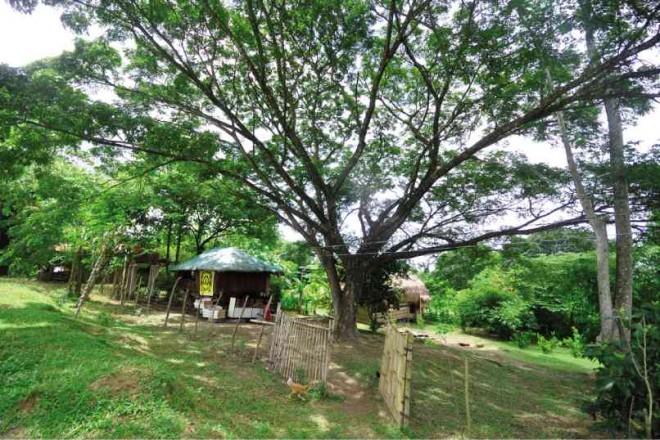New artists’ hub in Pangasinan

SAGUR Artists’ Village rises in Malasiqui town in Pangasinan to nurture artists. WILLIE LOMIBAO/CONTRIBUTOR
From the road, the huts in the midst of trees on a sloping terrain of the rural village of Nancapian in Malasiqui town, Pangasinan province, look like a typical cluster of farmers’ dwellings set apart from the main neighborhood.
“Welcome to Sagur,” says Chit Asignacion, owner of the compound he calls Sagur Artists’ Village. Sagur is Pangasinan word for “west.”
The village lies along the Lareg-Lareg-Nancapian barangay (village) road, about a kilometer from the Villasis-Malasiqui Road, which connects to the Manila North Road just after Villasis town. It is the same stretch where Arenas Farms, owned by the Pangasinan Rep. Rosemarie Arenas, and Poor Clare Monastery of St. James the Apostle are located.
“It’s quite remote, but the place is very ideal for artists,” says Patrick Fernandez, president of the newly formed umbrella art group Biskeg na Pangasinan.
A short walk inside the compound leads to four farm houses made of bamboo and indigenous and recycled materials. The main building has a spacious receiving area, with couches, a mini bar and a small center table on a bamboo floor. Its walls and wide-open windows are adorned by colorful woven yarns, old photographs and paintings.
Article continues after this advertisement“Pangasinan artists have always been telling me that no one seems to notice them. So, I said, ‘Okay, we put up a village where you can interact and meet different artists.’ That way, they can learn from each other on new techniques and media,” Asignacion says.
Article continues after this advertisementMeeting place
“We had long planned to have this one in Pangasinan to organize artists here. For almost six years, I’ve been going around Pangasinan but I did not see a solid artists’ community,” he says.
Construction of the village began in December 2013. The project had a “soft” opening on July 26.
Fernandez says the artists in the province “are really happy,” now that they have a place where they can regularly hold activities.
“Before we would meet in the beach or at the house of one of the artists or we go to Baguio City. We had no regular meeting place. With Sagur, we can have planning and brainstorming sessions, away from the hustle and bustle of the city,” Fernandez said.
His group plan to organize other artists in the province, especially those from the eastern towns.
Not only for artists
Asignacion says the village is not an exclusive place for artists. “Anyone can come here, have a meal or coffee, appreciate the paintings in our gallery or buy them. They can even stay overnight in our huts,” he says.
“This village is a work in progress,” Asignacion says, who is vice chair of the Chanum Foundation, the organization that set up the Tam-awan Village in Baguio City in 1995.
By next year, it will already be operating like Tam-awan, with a fully operational gallery and studio, he said.
Tam-awan, an Ibaloy word for “vantage point,” has 23 regular and 150 affiliated artists.